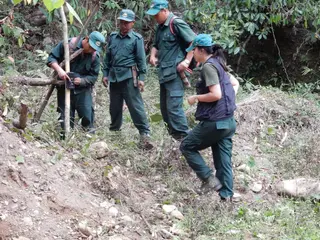Supporting the equitable models of livelihoods and sustainable use
IUCN, through its Species Survival Commission (SSC) Specialist Groups, including the CEESP/SSC Sustainable Use and Livelihoods Specialist Group (SULi), promotes the sustainable use and trade of wild species by:
- Strengthening evidence on the sustainable use of wildlife through the IUCN Red List and as a partner of the Collaborative Partnership on Sustainable Wildlife Management.
- Contributing evidence on wildlife use and trade to international policy fora, such as CMS (Convention on the Conservation of Migratory Species of Wild Animals) and CITES (Convention on International Trade in Endangered Species of Wild Fauna and Flora), including through the IUCN/TRAFFIC Analyses of the Proposals to Amend the CITES Appendices.
- Playing a key role in combatting illegal wildlife trade by providing information and advice to international bodies such as CITES, the GEF (Global Environment Facility) Global Wildlife Program, and as a coalition partner of United for Wildlife.
- Acting to combat illegal wildlife trade on the ground through IUCN Save Our Species, IUCN’s Commission on Ecosystem Management Fisheries Expert Group Task Force and IUCN’s Environmental Law Centre.













